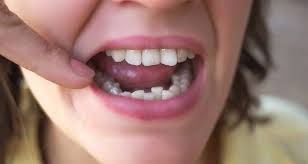Dental or teeth crowding may be common and affect anyone irrespective of age and gender. When your mouth does not have enough space for all your teeth, it can lead to crowding. It is a common type of malocclusion that can result during childhood, due to a variety of causes and lead to several forms of negative consequences if left untreated. A Plymouth dentist often manages teeth crowding through a wide range of orthodontic treatments like veneers, metal braces, clear aligners, or palatal expanders. Let’s explore more about dental crowding and how to treat the condition.
An insight into teeth crowding
Teeth crowding is a type of malocclusion or bad bite. Instead of growing in their normal position, certain factors may lead to the teeth erupting in abnormal or unusual positions, leading to crooked, and crowded teeth that don’t line up properly.
Children around the age of six are more susceptible to teeth crowding when the primary or milk teeth begin to fall to make room for permanent ones. This is not only an aesthetic problem but is also considered a health concern since crowded teeth are more difficult to clean.
Causes of teeth crowding
Some of the most common causes of crowded teeth are:
- The jaw is too small
- The teeth are larger and lack space in the jaw
- Narrow palate
- Supernumerary teeth
- Lingual habits
- Missing or broken teeth
Negative consequences of teeth crowding
Here is a list of the most frequent problems that can result from crowded teeth and will end up requiring treatment:
- Poor dental hygiene
- It becomes more difficult to access all areas of the teeth, leading to increased plaque accumulation
- Gum disease
- Increased plaque accumulation and poor brushing and flossing can result in gum inflammation and swelling
- Teeth erosion
- Wearing of the teeth enamel can be more frequent and quick.
- Aesthetic problems
- Your smile may be affected due to overcrowding which may lower your self-esteem and confidence.
Effective treatment options for teeth crowding
Treatment for crowded teeth depends on the severity of the condition. Options include:
Mild cases
- For a slight overlap of less than 3 mm, one of the options used is dental veneers.
Moderate or severe cases
- For an overlap of more than 3 mm, the treatment options include traditional metal braces, lingual appliances, Invisalign, or palatal expanders.
Dental crowding is a common alignment and occlusion problem, especially in children around the age of six. This may persist even in adulthood if left untreated. Consult your dentist if you are suffering from teeth crowding to explore treatment options that best suit your oral needs.
